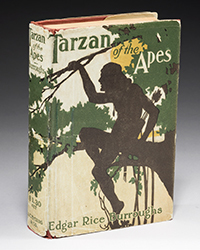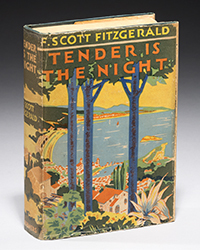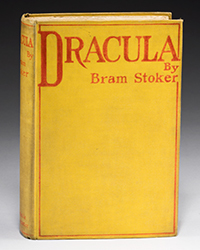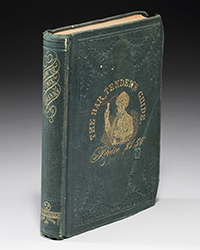The Delaware Art Museum in Wilmington is the recipient of an extensive collection of American publishers' bindings assembled by Mary Sawyer, as well as many illustrated books from the Brandywine School, which were a particular interest of her husband Frank.
The gift, in the works since 2008, is a significant addition to the museum’s existing collection which is best known for its important pre-Raphaelite holdings and works by American illustrators.
As Rachael DiEleuterio, the museum’s Librarian-Archivist recalled in a long email to RBH:
“In 2008 I had only been working at the Delaware Art Museum for a few months when Mary contacted the museum director, about her collection. She told Danielle she had about 600 publishers’ bindings (what were publishers’ bindings, we wondered?) and invited us to her house to take a look. Whether Mary actually believed she only had 600 books or whether she was intentionally minimizing the size of the collection so as not to scare us off, I’ll never know for certain, but I suspect Mary knew exactly how many books she had and that this was a strategic move.
“When we arrived at her house, we were warmly greeted by Mary, her husband, Frank, and significantly more than 600 books! We spent several hours with the Sawyers that day, as they pulled books from under beds, out of closets, and behind other books on shelves. (Frank had made risers covered in purple velvet so Mary could double-stack her books and squeeze every last inch of space out of her shelves).
“We were immediately captivated — not only by the books, but also by Mary and her enthusiasm for this niche area of book collecting. We knew right away that Mary’s collection would be a perfect fit for the library, as the books complement and enhance two major museum collections: American Illustration and the Samuel and Mary R. Bancroft, Jr. Collection of Pre-Raphaelite Art. The only concern we had was whether we had enough shelf space for what would actually turn out to be 2,932 books.
“The Museum Council, a dedicated group of volunteers who raised funds for the museum’s special projects, came to our rescue by paying for new movable shelving in the Rare Books Room to house the collection. In addition, the Gladys Krieble Delmas Foundation generously gave us a $10,000 grant in support of the processing of the collection.
“Mary, like most donors, did have a few stipulations about giving us her treasured books: the collection could not be broken up; it had to be made available for study by researchers and scholars; I had to take Sue Allen’s Rare Book School course on publishers’ bindings given at the Rare Books School at the University of Virginia; and Mary would hold onto her beloved Margaret Armstrong bindings for as long as she wanted to (I suspected the Armstrongs would only come to us if and when we earned her trust).
“Of course, we readily agreed, and the books started arriving in small batches in mid-2009. As a side note, I was incredibly lucky to take Sue Allen’s very last course at Rare Book School in the summer of 2011, and what an experience that was! Todd Pattison now teaches that course and he is probably the only person whose knowledge of publishers’ bindings rivals Sue’s.
“Mary was a very meticulous and organized person. Every few months I would be summoned to her house to retrieve a batch of books—sometimes only three or four boxes, sometimes 10 or 12 (my everlasting gratitude goes to Stewart and Iz in the museum’s operations department who would load and unload the books for me when Mary had amassed her bigger batches).
“Each box was carefully packed and arranged by designer or binding style. Inside every book was an index card with Mary’s notes about the designer, edition, bibliographic references, and the price she paid for the book. Once the boxes were back at the museum the curators and I would “Ooh” and “Aah” over them, and my wonderful library volunteer, Carol Jording, and I would get to work scanning, cataloging, covering, and shelving the books.
“Processing these books takes a lot more time than it would for a typical book. Each catalog record contains a digital image of the book’s cover and a detailed description of the decorative elements, including the color and pattern of the cloth, the stamping type and color, and the edges and endpapers. After scanning and cataloging, we cover each book in mylar to protect it from dust, dirt, and hand oils before shelving it in the Rare Books Room.
“Though this process sounds onerous, it was really the best way for me to learn about the collection as it gave me the chance to spend time with each and every book. It also helped me learn to spot and identify the designers’ monograms, which are often difficult to locate.
“Here, Mary’s notecards were incredibly helpful, as she did all of the hard work of identifying most of the monograms (I say most, because there are about 200 monograms in the collection that even Mary could not figure out!) I discovered that my favorite designer is Sarah Wyman Whitman, and now her elegant, stylized floral motifs and distinctive lettering are easy for me to identify, even before noticing her monogram of initials within a flaming heart.
“One monogram that really piqued my interest was what appeared to be a T and a dot encased in an oval (this monogram would later morph into a more distinctive “scarab” design). It was on a copy of The Pilgrim’s Progress” illustrated by Byam Shaw, and Mary’s index card identified the designer as Albert Angus Turbayne, an American-born designer about whom very little is known and who spent most of his career working in England. Mary had only given us three bindings by him, but they inspired me to start collecting more, and even led to a library exhibition dedicated to Turbayne.
“What I didn’t know then was that Mary’s daughter Daphne was also actively collecting Turbayne bindings, which she donated to the library in 2023. Today, we have over 50 of his designs, which may well be one of the largest collection of Turbayne bindings in a public institution.
“In addition to the Turbayne exhibition, the Sawyer Collection has been the inspiration for several library and museum exhibitions, including The Cover Sells the Book: Transformations in Commercial Book Publishing, 1860-1920, which illustrated the ways in which the aesthetics and ideals of private presses, such as William Morris’s Kelmscott Press, were translated by commercial publishers. In 2010, while still in the midst of receiving and cataloging Mary’s books, artist Nina Katchadourian used the collection for an installment of her Sorted Books project, Once Upon a Time in Delaware/In Quest of the Perfect Book.
“Mary’s books are used in conversation with artworks in the permanent collection American Illustration and Pre- Raphaelite galleries and in special exhibitions. Scholars from as far away as Germany and the UK have used the collection to support their research and writing. I also highlight publishers’ bindings from the Sawyer Collection on Instagram @thedamlibrarian. Future projects that will rely on the collection include a 2027 exhibition on the cultural evolution of religion in the late Victorian era.
“Mary’s beloved Margaret Armstrong bindings —over 200 in total—did eventually come to the library, with the bulk of them arriving in 2018, a decade after we first met. Other highlights of the collection include many of the Andrew Lang fairy books, stellar examples of wraparound bindings, and with Daphne’s additions, the M. G. Sawyer Collection of Decorative Bindings has grown to over 4,000 books and contains the best examples of American and British publishers bindings.”
Mary Sawyer died earlier this year, at the age of 98. Explaining her mother’s interest in binding and how it started, grew and expanded her daughter Daphne commented in a long email to RBH:
“Book collecting is often an arc, beginning with curiosity, and leading to culture, learning and yes, obsession. Mary Sawyer's collection is in many regards a bibliophilic classic, and her gift to the Helen Farr Sloan Library of the Delaware Art Museum is nothing short of monumental.
“Mary was a trained chemist who moved to Wilmington, Delaware in the early 1950s to take a job at the DuPont Company after World War II. There she married another chemist and college sweetheart, Frank, and raised two children. Books were a cornerstone in Mary's life. She was an avid reader and decades long volunteer at the local library where she taught herself and practiced book repair.
“She began collecting publishers' bindings casually, in the late 1980s. She would join my father and I on our book buying outings. While we browsed she sifted through front porch bargain bins at antique malls and used bookstores. She justified her first haul of bindings, at $1 each, as “too beautiful to leave to the elements.” She was primarily interested in the cover designs: the colors, the techniques and the elegant art nouveau lines.
“Subsequently, she discovered Rare Book School at the University of Virginia in Charlottesville, VA. There she studied for several summers in the 1990s with Sue Allen, the pioneer in Victorian bookbindings. In addition to providing inspiration and method, Sue Allen connected Mary with Charles Gullans and John Espey who, along with Sue Allen, were documenting the rich traditions of American Trade Bindings, a period that began in earnest both in the UK and the US in the 1860s and flourished until the catastrophe of World War One and the emergence of the more economical paper dust cover.
“In addition to the binding designs, Mary was fascinated by the back stories of the designers she was collecting. Often precluded from Victorian Fine Arts circles, women were moving into the graphic arts and carving out successful careers in the second half of the 19th century.
“Sarah Wyman Whitman and Margaret Armstrong were two notable American designers in this period whose work Mary collected, eventually amassing over 200 unique works of Margaret Amstrong alone.
“She also collected UK publisher bindings from this period to demonstrate how British art movements influenced their US counterparts and vice versa. Here again, her interest focused on the women pioneers, the design works of the ‘Glasgow Girls,’ Jessie King, Katherine Cameron in book arts, but also the towering contributions of Walter Crane to British design and his American counterparts Howard Pyle and Will Bradley.
“My mother was very intentional in building a collection that preserved outstanding examples of the variety of styles from this exuberant period in book arts and publishing history. Recent additions to the collection highlight works by more American women designers: Amy Sackler, Bertha Stuart and Blanche McManus to name a few, and influential British works by William Morris, Aubrey Beardsley, Laurence and Clemence Housman, H.J. Ford, and American born Albert Angus Turbayne.
“In addition to being an outstanding resource for graphic design, Victorian social, book arts and publishing history, the M.G. Sawyer collection, weighing in at 4000+ volumes, reflects the unique fine arts collections at the Delaware Art Museum, that of Howard Pyle and the Brandywine School of Illustration and the largest collection of Pre-Raphaelite paintings outside of the UK.
“Here are some highlights of the collection. It is a testament to Mary's passion and preservation vision as much as her commitment to her community and the Delaware Art Museum.
“The next phase is a joint effort between the Sawyer family and the Delaware Art Museum to secure these rare resources for future access, education and research through endowment of the Librarian and Archivist position at the Helen Farr Sloan Library,” she said.
Reach RBH writer Susan Halas at wailukusue@gmail.com




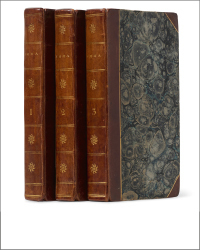
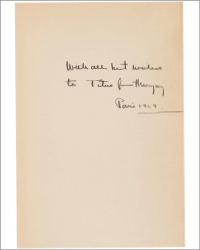




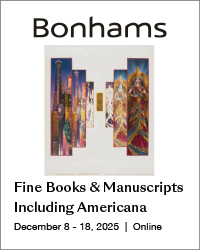

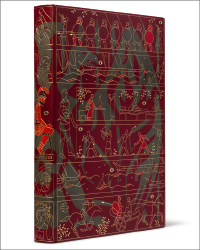
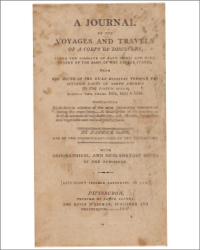
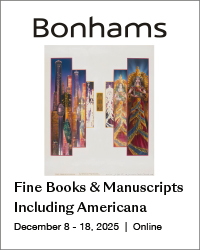
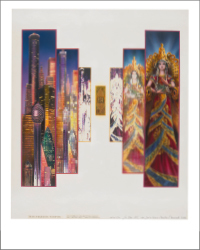
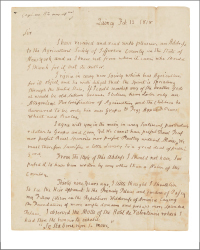

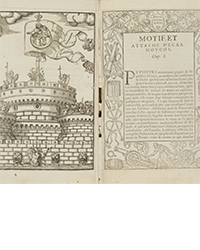
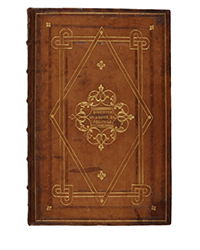
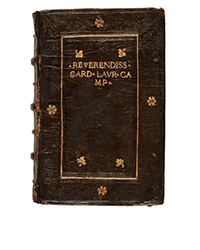
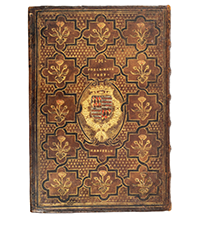
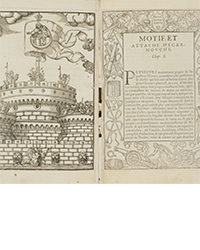
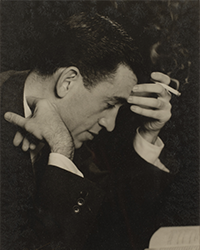
![<b>Sotheby’s, Dec. 16:</b> [Austen, Jane]. A handsome first edition of <i>Sense and Sensibility,</i> the author's first novel. $60,000 to $80,000. <b>Sotheby’s, Dec. 16:</b> [Austen, Jane]. A handsome first edition of <i>Sense and Sensibility,</i> the author's first novel. $60,000 to $80,000.](https://ae-files.s3.amazonaws.com/AdvertisementPhotos/9a74d9ff-42dd-46a1-8bb2-b636c4cec796.png)


![<b>Heritage, Dec. 15:</b> John Donne. <i>Poems, By J. D. With Elegies on the Author's Death.</i> London: M[iles]. F[lesher]. for John Marriot, 1633. <b>Heritage, Dec. 15:</b> John Donne. <i>Poems, By J. D. With Elegies on the Author's Death.</i> London: M[iles]. F[lesher]. for John Marriot, 1633.](https://ae-files.s3.amazonaws.com/AdvertisementPhotos/8caddaea-4c1f-47a7-9455-62f53af36e3f.jpg)
